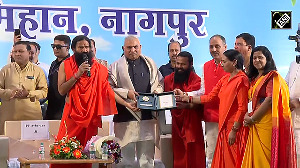 Tracking a smaller number of taxpayers with a high income base and using data from millionaire surveys and purchases of high-end cars and houses can make the tax department more efficient, says A K Bhattacharya.
Tracking a smaller number of taxpayers with a high income base and using data from millionaire surveys and purchases of high-end cars and houses can make the tax department more efficient, says A K Bhattacharya.
Recent surveys on the number of rich Indians are quite revealing. According to The Multi-Millionaire Phenomenon 2014: New World Wealth, the number of multi-millionaires in India went up from 13,700 in 2013 to 14,800 in 2014, a rise of about eight per cent. Multi-millionaires have been defined as those with net assets of at least $10 million or about Rs 60 crore (Rs 600 million).
If you go down the ladder, the same survey found that the number of millionaires in India saw a slightly slower rise of about six per cent in this period - going up from 214,000 in 2013 to 226,800 in 2014. And millionaires are being defined as individuals with net assets of at least $1 million or Rs 6 crore.
Broadly endorsing such a finding is KnightFrank's survey - The Wealth Report 2014. It says there were 1,576 Indians in 2013 with investible assets estimated at $30 million or Rs 180 crore. This number came down a little to 383 for those who had investible assets of about Rs 600 crore and further down to only 60, who had investible assets of about Rs 6,000 crore.
The interesting point the Knight Frank survey makes is about the future. By 2023, it says, the number of Indian individuals will more than double in all the three categories - 3,130 individuals with investible assets of Rs 180 crore, 761 with investible assets of about Rs 600 crore and 119 individuals with investible assets of Rs 6,000 crore (Rs 60 billion).
So, if you believe these surveys, the growth of India's millionaires is unlikely to slow down in the years to come. And that is also why the Indian government or the finance ministry, in particular, should be worried about its direct tax collection efforts.
In a country with over 34 million taxpayers, the number of individuals who admit to earning taxable income of Rs 1 crore (Rs 10 million) or more is just 42,800. Why should a country with 226,800 dollar millionaires (with net assets of at least Rs 6 crore) have less than 50,000 taxpayers earning taxable income of over Rs 1 crore?
You may argue that individuals with net assets of Rs 6 crore need not always have taxable earnings of over Rs 1 crore per annum. Well, why shouldn't the tax department look at the list of buyers of high-end cars in this country?
Then there are luxury homes and other such products, whose sales can be easily tracked. If the revenue department zeroes in on just the buyers of such products and houses, its list of those who should be declaring a taxable income of over Rs 1 crore a year will easily grow much longer than the 42,800-odd taxpayers who figure in it currently.
The point is that the surveys and the data on the purchase of high-end cars and houses do not contradict each other. Instead, they underline the need for the revenue department in the finance ministry to get more efficient and effective in widening the base of its tax collection.
Consider the following. Almost 90 per cent of India's individual taxpayers fall in the category of people earning taxable income of up to Rs 5 lakh a year.
Yet, this category accounts for only 10 per cent of the total income-tax actually collected by the revenue department. In contrast, less than two per cent of taxpayers fall in the category of individuals earning taxable income of above Rs 20 lakh a year, but account for over 63 per cent of actual tax collected in a year. These numbers pertain to 2011-12, but the trend has broadly been unchanged since then.
So, the message for the revenue department should be clear. It cannot ignore either the data of purchases of high-end cars and houses or the survey findings on dollar millionaires in the country.
Based on them, it should question the narrow base of the high-end taxpayers. Focussing on a smaller number of dollar millionaires would yield greater dividends by way of improved tax collections.
Tracking a smaller number of potential taxpayers with a high income base would be relatively easy and yield quicker results. The tax department could then be more efficient and effective.
Remember that the revenue department currently has a fairly large number of employees, most of whom are engaged in tax collections. The total workforce of the revenue department is now about 177,000 and the government will spend over Rs 6,700 crore on them by way of pay and other allowances in the current year.
If the revenue department can decide to work towards using the surveys and data to increase the number of individuals that should report taxable income of over Rs 1 crore a year, its task of collecting higher revenues will become a little more manageable.
In the first quarter of the current financial year, tax collections have actually declined over what was recorded in the same period of 2013-14. The Union Budget for 2014-15 had set a target of 18 per cent growth in tax collections.
The data from millionaire surveys and purchases of high-end cars and houses could be used more effectively by a government that is quite stressed about meeting its revenue targets for the current year.













 © 2025
© 2025